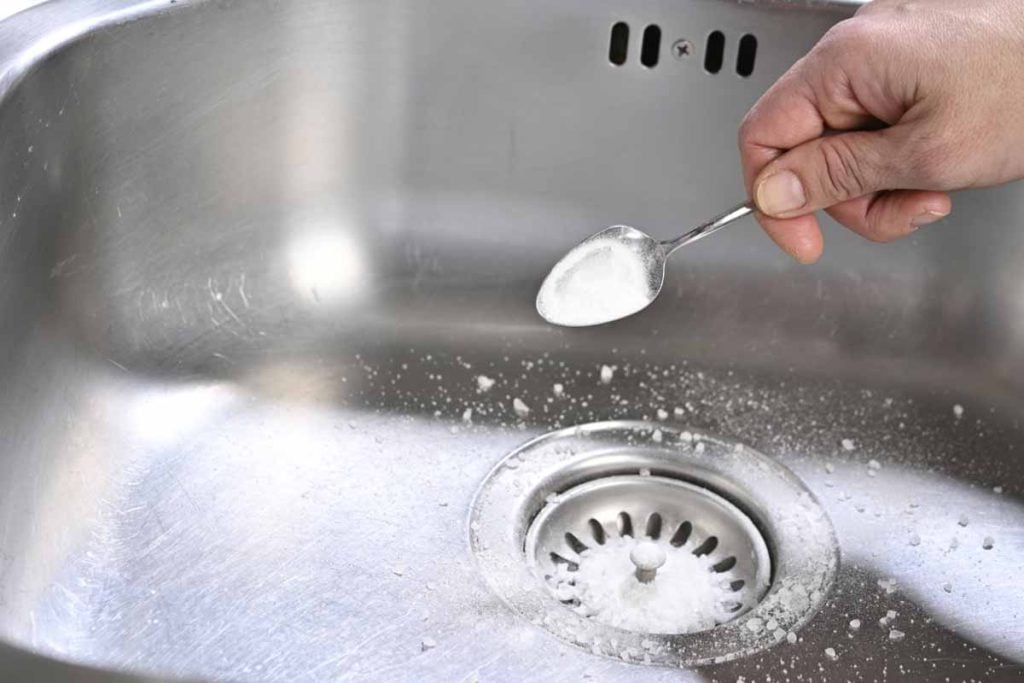October’s first storms test every home’s plumbing, as rain, roots, and routine cooking all strain drains. A simple maintenance habit helps, especially before the holidays: use vinegar the right way and pair it with smart fall checks. With clear steps, safe gear, and timely inspections, you can curb odors, discourage sludge, and head off cold-season backups without guesswork.
October exposes how drains actually fail
Rain pushes outdoor grates to the limit, while summer growth sets traps underground. Roots chase moisture, then slip through cracked or offset joints, so hidden intrusions wait for the first downpour. Water backs up, debris settles, and odors creep in because the P-trap holds water as a barrier against sewer gases, yet it also collects residue.
Bacteria and sludge gather first in that U-shaped section. According to master plumber Aaron Adams of Aaron Services, routine care matters more in fall because buildup accelerates with heavy use. He suggests a measured approach, since too much liquid dilutes results, while too little leaves residue untouched. A small, steady dose works better than a panic purge after a storm.
Adams suggests mixing equal parts vinegar and water—about half a cup of each works well. Pour it down the drain, then just let it sit for several hours or even overnight so the acid can do its thing. Do this once a month to keep smells at bay and prevent buildup A clear measuring cup—something like the OXO Good Grips—makes it easy to measure accurately so you’re not pouring out more than you need.
How vinegar helps when maintenance—not miracles—is the goal
This kitchen staple helps as part of a maintenance plan, not as a cure-all. Mild acidity softens light films from soap and grease, which otherwise cling to pipe walls. Because the P-trap holds water by design, residue collects there first; gentle maintenance keeps that seal fresh while limiting smells during damp weeks.
For small buildups, pros also pair the acid with baking soda. The fizz helps shake films loose, while the rinse washes particles away. However, the combo still has limits, since stubborn blockages behave like plugs, not coatings. When water stands for hours, chemical nips will not pull a cork; mechanical clearing will.
Jim Parker of Jim’s Plumbing Now puts it plainly: use maintenance, not magic. Even in October, a mild solution will not free a fully clogged pipe. PVC typically handles the acid well, yet older metal lines can wear if treated too often. When performance drops, schedule proper cleaning instead of repeating weak fixes.
What this method cannot fix—and what to do instead
Clogs from wipes, fibrous trimmings, or impacted roots laugh at gentle maintenance. Because flow narrows, a layer of film becomes a wall. Hot water helps rinse loosened film, yet a solid obstruction remains solid. So, while monthly care keeps lines healthier, you still need inspections and, sometimes, a trained hand with the right tools.
Eric, a seasoned pro, warns that homeowners usually act late. Annual drain inspections, done before heavy rain, reveal cracks and root intrusions while repairs are small. As storms return in October, unchecked outdoor drains overflow, then water reaches thresholds and wall bases. Early checks cost less than drying floors and replacing baseboards.
Kitchens add pressure as holiday cooking ramps up. Disposals grind, but they do not defy physics. Starchy peels, stringy husks, and fat globs pack traps and later harden. Use a countertop compost caddy—Joseph Joseph’s ventilated model helps—to park scraps, then empty the bin, since airflow reduces moisture and smell without stressing the pipes.
Numbers, timelines, and gear for safe routine care
Measure a half-cup plus a half-cup; precision avoids waste and protects finishes. After the pour, pause that fixture for several hours, or leave it overnight when schedules allow. Because consistency beats force, repeat monthly through winter. During rain spells, also sweep outdoor grates, since dry leaves turn to mats that block flow.
Support maintenance with hot-water follow-through. Heat helps carry loosened film downstream, while it also refreshes the trap’s barrier. For odor control, clean the disposal with a dedicated tablet; Affresh’s option is built for the job and reduces that sour, sweet smell that rides back up when the chamber holds residue.
Pipe material matters. PVC tolerates mild acid well under normal use, yet aging metal can pit. If lines are old, ask a plumber about alternatives and schedule proper cleaning. Because roots search for moisture, cracks invite them back. Fix the opening, then maintenance lasts longer, and odors do not return after every rain.
Prevent clogs at the source with smart vinegar add-ons
Kitchen habits shape drain health. Avoid pushing all trimmings down the disposal, since stringy fibers wrap around edges, and starches gel. As Thanksgiving approaches, scrape plates into the bin first, then send only rinseable residue to the grinder. The extra minute now saves hours of mess later in peak cooking weeks.
Kelly Russum of KC’s 23 ½ Hour Plumbing & Air Conditioning suggests one more tweak. After maintenance, rinse with hot water, then add a few tablespoons of food-grade mineral oil. The thin layer slows trap evaporation, so sewer gases stay sealed out, while odors fade. Use it sparingly so the barrier stays stable.
Helpful gear keeps care simple. A clear-marked measuring cup prevents over-pouring. Shop staples like baking soda at a supermarket or Walmart for the fizzing step. If you prefer store brands, a distilled white option from Great Value works for maintenance. Keep supplies together so monthly routines, and storm prep, stay easy to repeat.
A practical path to fresher drains before winter sets in
Before holiday cooking and long rains, build a simple routine that sticks. Use vinegar monthly for maintenance, pair it with baking soda when light films persist, and follow with hot water. Because inspections catch cracks and roots early, book one each year, then keep scraps out of the grinder so fall storms pass without drama.
